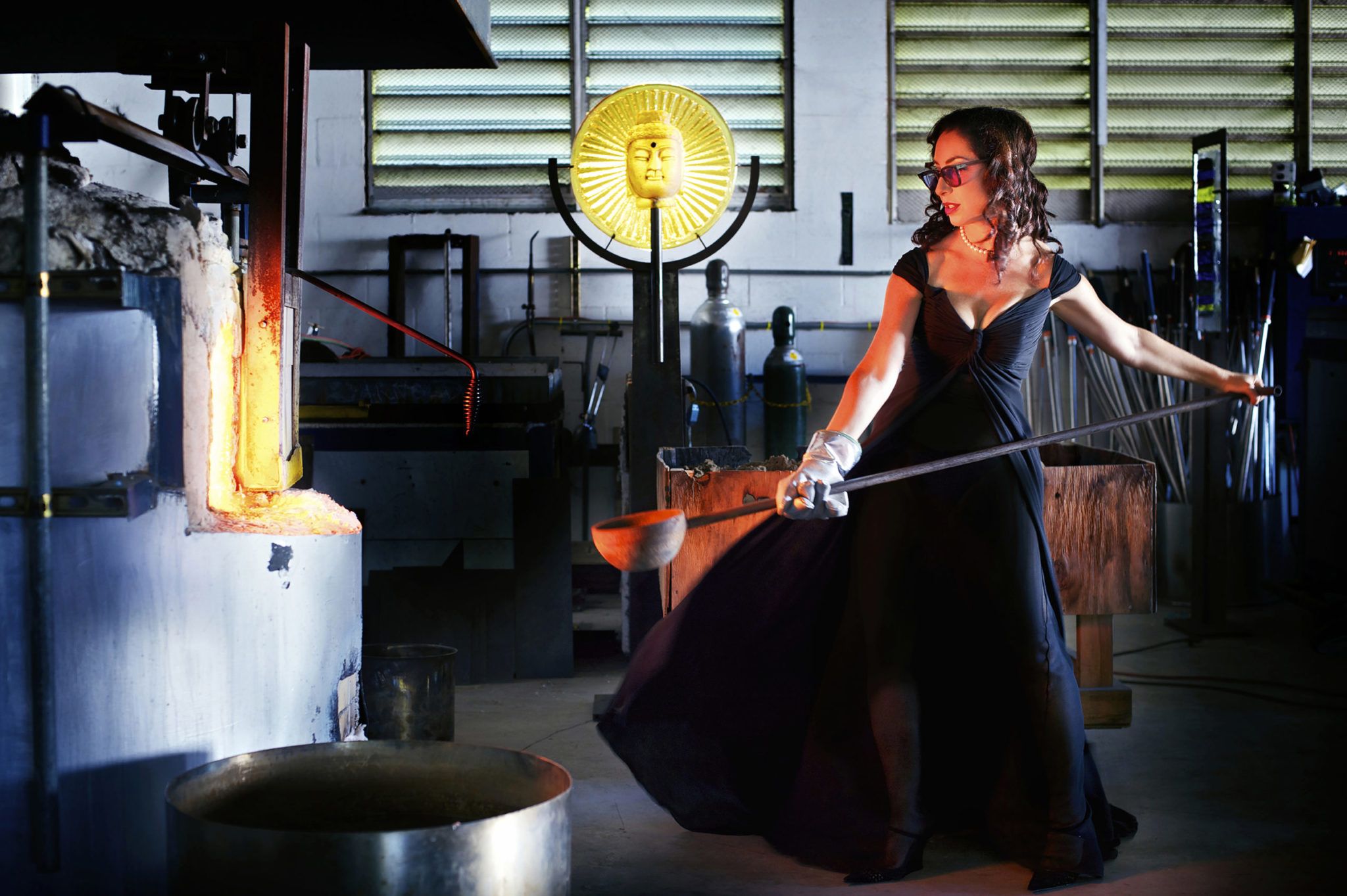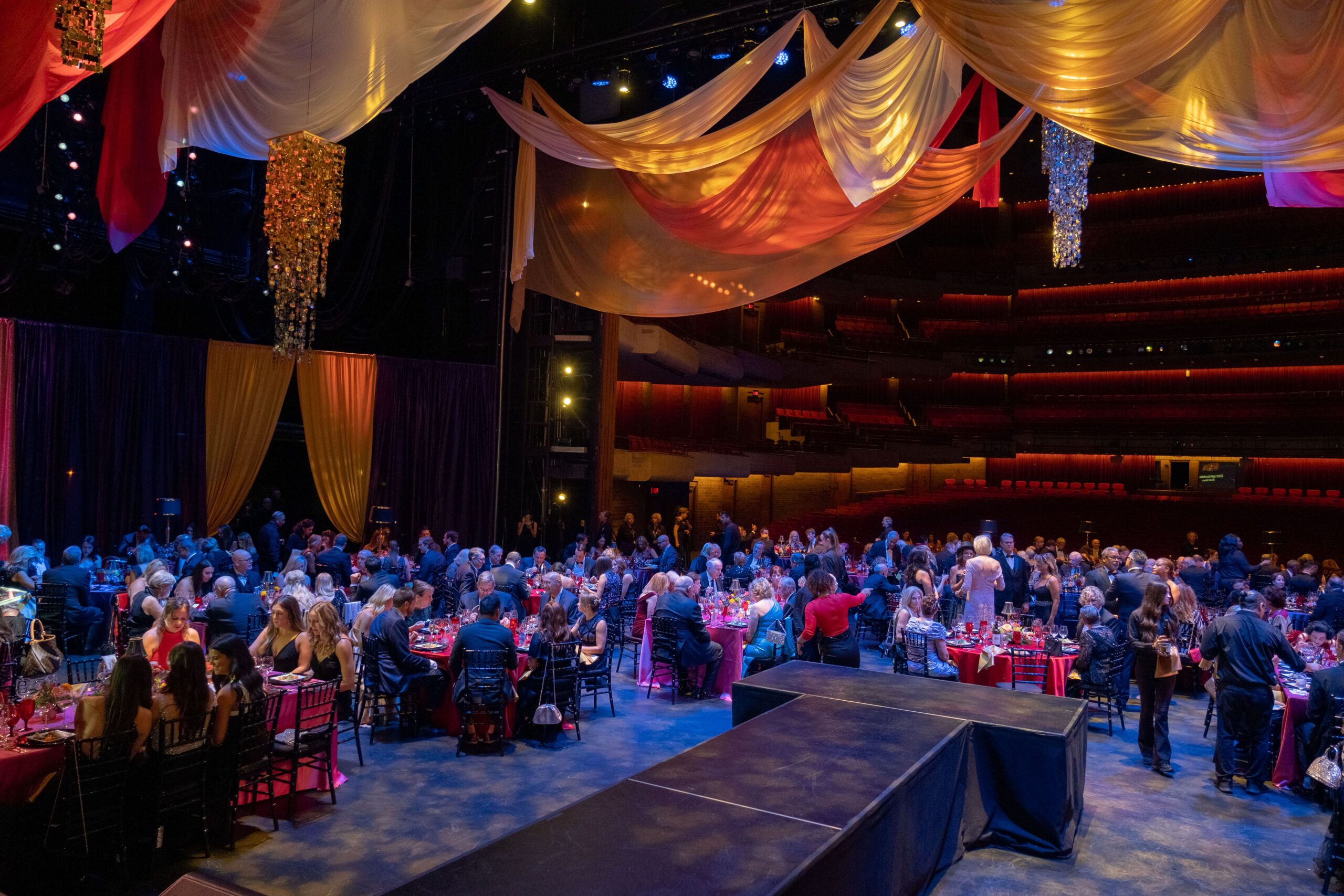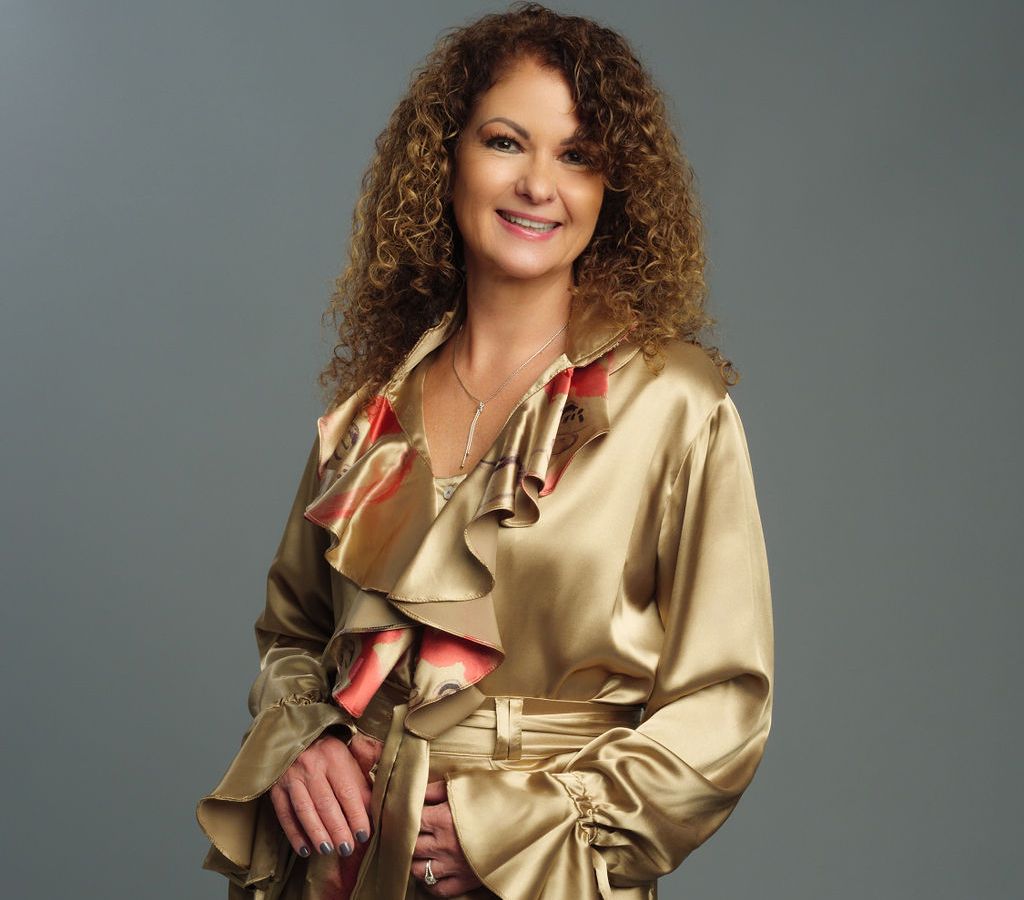Glass artist Marlene Rose doesn’t shy away from a challenge. She’s built her career on a difficult and dangerous technique: sand casting. In this process, Rose prepares a mold using sand and clay and then ladles in molten glass heated to more than 2,000 degrees Fahrenheit. Each piece must stay in a special cooling oven for at least a week.
There are numerous methods of working with glass, but sand casting is by far the most dangerous and physically demanding. Rose knows of one, maybe two, other artists using this technique in the Tampa Bay region.
Rose learned the technique in 1988, while attending Tulane University. “It just clicked on every level of my personality,” says Rose. “I actually like the danger because I have a bit of an adrenaline-junkie side. You also need a team so you don’t hurt yourself and I loved team sports, and dance, growing up so it felt a bit like that.”
You can see her work at the Marlene Rose Gallery on Clearwater’s Cleveland Street. She’s also represented in 15 galleries internationally and is highlighted at the Imagine Museum in downtown St. Petersburg, which is dedicated to showcasing the top 60 American glass artists.
Museum founder and benefactor Trish Duggan was an early collector and a student. “She’s one of the only students I’ve ever taught,” Rose says. “She’s been a very strong supporter of me and my career. It’s just been a wonderful win-win situation because it’s put a spotlight on what’s happening in the studio glass movement. My technique is just one of many, many ways people are working with glass today.”
Rose’s work on display features installations of all shapes and sizes and includes butterflies, bells and abstracts. Inspiration, she says, comes from everywhere. “Ancient cultures including the Shang Dynasty and the Han Dynasty sparked my interest in bold simplicities. They took away a lot of the details and were able to create an emotional response. I’m trying to break things down into simplicity.”
In recent work, Rose draws from her lifelong passion for horses. She recently started riding again after a 35-year break. Following her ethos for simplicity, she broke the design down into the basic shape of a cave drawing of horses. “I really love simple, bold, shapes and forms that aren’t cluttered with detail,” she says.
She’s also exploring relationships in recent work, drawing inspiration from her 26-year marriage to architect Thomas Coates. “I’m thinking about what makes them work, and the ying and the yang of being very different, yet it still works.”
Outside of her studio, Rose is on a mission to talk to women, and other artists, about the viability of a visual arts career. “It is something worth pursuing,” she says. “It is possible to have a career as an artist. It’s not an easy career path for sure, but it’s a business like anything else. It’s possible to have success as long as you promote and market your work.” ♦













